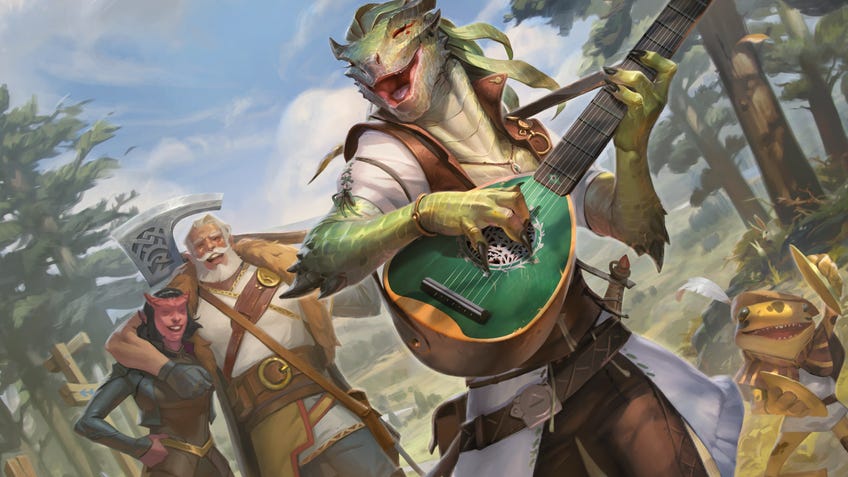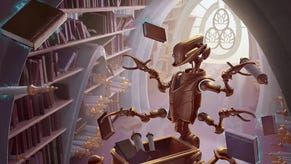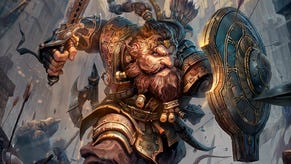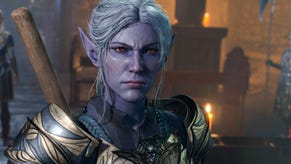Dungeons & Dragons’ creative campaigns are making up for its boring sourcebooks
Recent releases have disappointed.
A new sourcebook for Dungeons & Dragons 5E called Mordenkainen Presents: Monsters of the Multiverse was revealed earlier this week. I have to say, I was entirely uninspired by it. Essentially a compilation of existing D&D content - mainly playable species to choose from and monsters to fight - Monsters of the Multiverse does nothing to ignite my excitement for the roleplaying game, which is sometimes hard enough to do considering that D&D 5E is far from my favourite RPG.
Nevertheless, I’ve always found Dungeons & Dragons’ sourcebooks to be more interesting than its campaign books, mostly because they provide the tools dungeon masters and players need to construct their own storylines, rather than just laying out a set path. D&D is just a better game when DMs and players are free to interpret and use it however they want, rather than having to follow the rules and scenarios to the letter. However, in the past couple of years, I’ve found myself increasingly getting less excited about the sourcebook releases and more invested in the fantasy RPG’s campaign books.
A large part of this is that it feels like the sourcebook side of Dungeons & Dragons has recently been on autopilot, with the last few releases focusing on either catalogue-style collections, in the vein of the recent Tasha’s Cauldron of Everything and Fizban’s Treasury of Dragons, or based on an existing setting. While sourcebooks like Volo’s Guide to Monsters are certainly useful in many situations, such as when players want to create a character using a species not featured in the Player’s Handbook, they’re not something I want to just sit down and read in an evening - they’re better served as reference material that’s perhaps opened a couple of times during a campaign.
Sourcebooks that are set in existing settings or worlds, such as any of the Magic: The Gathering-adjacent books, or books that build upon settings introduced elsewhere, feel creatively stale. I’m not familiar with the Theros or Strixhaven card sets released for Magic: The Gathering, so I don’t exactly have any fan investment in seeing D&D sourcebooks set in those worlds. I’d honestly rather Wizards of the Coast published more sourcebooks based in original settings. Explorer’s Guide to Wildemount, the sourcebook set in the world of actual play series Critical Role, felt like something that would be popular at the time of its release, but wouldn’t be one that players would come back to in the future.
Rime of the Frostmaiden felt like a new kind of horror, one where players were fighting against terrifying odds.
Otherwise, we’ve had sourcebooks that have gone back to settings introduced in other Dungeons & Dragons books - such as last year’s Van Richten's Guide to Ravenloft, which revitalised the world previously introduced in the classic Curse of Strahd campaign. These are probably the sourcebooks I have the least issue with, besides those that focus on an entirely original setting, as they can provide fresh insight into a setting that players might have experienced tangentially.
In lieu of these uninspiring sourcebook releases, it feels like the campaign book side of Dungeons & Dragons 5E has been stepping in to pick up the creative slack. Whereas the recent D&D 5E sourcebooks have introduced one or two interesting changes over the last few years - such as removing set ability score increases for specific playable species and removing species alignments - the RPG’s campaign books have been exploring all sorts of exciting avenues.

2020’s Icewind Dale: Rime of the Frostmaiden might not have offered anything new when it comes to setting, but it presented DMs and players with a campaign that had a distinct atmosphere and tone of survival horror. D&D content has touched on horror in the past with the likes of Tomb of Annihilation and Curse of Strahd, but Rime of the Frostmaiden felt like a new kind of horror. One where players were fighting against terrifying odds, where the goal wasn’t to provide another power fantasy but a narrative about coming to terms with the possibility of failure.
I’d rather D&D 5E books focus on exploring new settings not affiliated with any outside brands.
Similarly, last year’s Wild Beyond the Witchlight enabled players to explore the realm of the Feywilds, which has always had so much potential because it feels like DMs can get away with concocting almost anything, regardless of how strange it might be. Though many DMs have been providing players with ways of navigating scenarios without the need for violence, this was also the first official Dungeons & Dragons book to actively promote non-combat methods for overcoming obstacles and engaging with potential enemies.
With the upcoming release of the latest campaign book, Critical Role: Call of the Netherdeep, I’m hoping that this side of Dungeons & Dragons doesn’t begin slipping into creative stagnation as well. I’m not 100% sure whether the storyline for the book will be based on any existing narrative from the actual play’s second campaign, with players set to explore the continent of Marquet - the main location of Critical Role’s current campaign - in search of a champion. This could be an opportunity for fans and players alike to experience an entirely fresh story within the world created by Matthew Mercer.
When it comes down to it though, I’d rather D&D 5E books focus on exploring new settings not affiliated with any outside brands, or those that players and DMs have become overly familiar with. If a sourcebook does return to an older setting - which it looks like it will, according to an announcement made at last year’s D&D Celebration - I’d prefer it feature a perspective we might not have seen before or new gameplay mechanics that allow players to approach the RPG differently, rather than just another set of subclasses and more creatures to stab.
While retrospective changes like the Vistani people in Van Richten's Guide to Ravenloft being re-written to removal harmful Romani stereotypes, as well as the minor alterations to playable species in character creation, are a step in the right direction, I wish D&D 5E would take more risks than just releasing yet another catalogue sourcebook.











